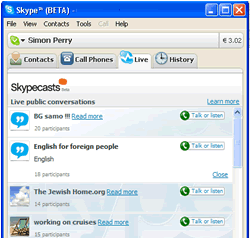 Skype has made public its Beta 3.0 version of it super-popular VoIP software for Windows. It’s been sitting with NDA’s beta testers for just over a week now. Skype has also hit 8 million simultaneous users online today.
Skype has made public its Beta 3.0 version of it super-popular VoIP software for Windows. It’s been sitting with NDA’s beta testers for just over a week now. Skype has also hit 8 million simultaneous users online today.
There’s a few changes, but we’re not sure that there’s been enough to justify a whole version number upgrade.
One of the most interesting additions is the ability to click-to-call any landline phone number that you see on the Web (once a small browser plug-in ins installed), by placing a call through your SkypeOut account.
Henry Gomez, Chief Marketing Officer & Director of Worldwide Operations, Skype, gave an example of how it might be used, “imagine you’re searching online for a good place to eat and you find a restaurant and want to make a reservation. All you need to do is click on the number and you can make a direct call using SkypeOut.”
As ever with each Skype release, there’ been more adjustments made to the software interface. Amoung other changes is another main tab, called “Live,” which gives quick access to the Skypecast feature – giving real-time chats (IM and VoIP) to up to 100 people) – which has been around for quite a few releases.
By including the Live tab so prominently, Skype are attempting to make people become more dependent on Skype, beyond using it for ‘just’ communications, they’re hoping people will use it for ‘entertainment.’
 Check Point, the makers of the top-notch internet security software ZoneAlarm, have announced that they’ll be moving into the hardware market with the release of a new, high-spec, wireless router.
Check Point, the makers of the top-notch internet security software ZoneAlarm, have announced that they’ll be moving into the hardware market with the release of a new, high-spec, wireless router.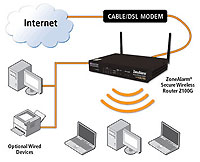 The new router incorporates ZoneAlarm’s stateful packet inspection (SPI) firewall technology, and an intrusion detection and prevention system that actively monitors network traffic to block out hackers and worms.
The new router incorporates ZoneAlarm’s stateful packet inspection (SPI) firewall technology, and an intrusion detection and prevention system that actively monitors network traffic to block out hackers and worms. Time Magazine has stepped up to the awards podium, opened the little brown envelope and named the video sharing Web site YouTube as its “Invention of the Year.”
Time Magazine has stepped up to the awards podium, opened the little brown envelope and named the video sharing Web site YouTube as its “Invention of the Year.”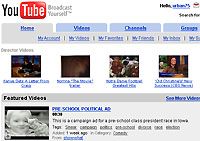 Clearly in a mood for waxing lyrical, the Time’s Lev Grossman was ready to add his own insights: “YouTube had tapped into something that appears on no business plan – the lonely, pressurised, pent-up video subconscious of America.”
Clearly in a mood for waxing lyrical, the Time’s Lev Grossman was ready to add his own insights: “YouTube had tapped into something that appears on no business plan – the lonely, pressurised, pent-up video subconscious of America.”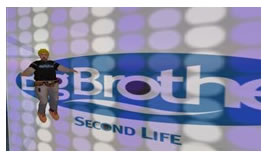 Reality TV programme, Big Brother, is moving to Second Life on 1 December, or “First virtual piglet Brother” as the BabelFish translator put it.
Reality TV programme, Big Brother, is moving to Second Life on 1 December, or “First virtual piglet Brother” as the BabelFish translator put it. How do you temp a Second Life player to take part when they’re likely to not like, or possibly hate TV? Give them something they’d love … a tropical island in Second Life. Reuters report the value of it being worth about US$1,675 (£883).
How do you temp a Second Life player to take part when they’re likely to not like, or possibly hate TV? Give them something they’d love … a tropical island in Second Life. Reuters report the value of it being worth about US$1,675 (£883).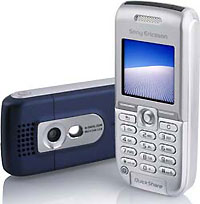 Global sales of camera phones are set to make up nearly half of the total of all mobile phone sales this year, with the figure expected to rise to 81 percent of all phones by 2010.
Global sales of camera phones are set to make up nearly half of the total of all mobile phone sales this year, with the figure expected to rise to 81 percent of all phones by 2010. “In 2006, 1.3 and two mega pixel resolutions will become the minimum requirement for mid-tier to high-end phones and a 3.2 mega pixel resolution will be used for flagship products. This will increase to five mega pixels in 2007,” Milanesi said.
“In 2006, 1.3 and two mega pixel resolutions will become the minimum requirement for mid-tier to high-end phones and a 3.2 mega pixel resolution will be used for flagship products. This will increase to five mega pixels in 2007,” Milanesi said. You’ve probably seen the news yesterday that
You’ve probably seen the news yesterday that 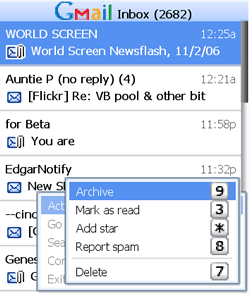 Being the inquisitive little ferrets that we are, we jumped on to our ever-at-hand mobiles to try the same thing. Not expecting much, as we’re outside the US, you can imagine our surprise when we were given the option of downloading the app – but persisted with the US/Canada only malarky. We were warned that the app might not work correctly.
Being the inquisitive little ferrets that we are, we jumped on to our ever-at-hand mobiles to try the same thing. Not expecting much, as we’re outside the US, you can imagine our surprise when we were given the option of downloading the app – but persisted with the US/Canada only malarky. We were warned that the app might not work correctly.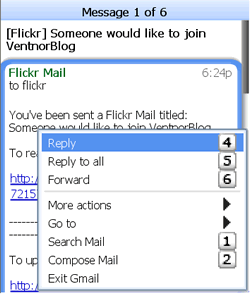 Argh .. the handset we used fell at the final hurdle, but we pressed on with some others until success! We checked in with
Argh .. the handset we used fell at the final hurdle, but we pressed on with some others until success! We checked in with  Recently while travelling on an SAS flight, I had the pleasure of trying out the Connexion by Boeing service, which is an Internet service offered on long haul services.
Recently while travelling on an SAS flight, I had the pleasure of trying out the Connexion by Boeing service, which is an Internet service offered on long haul services.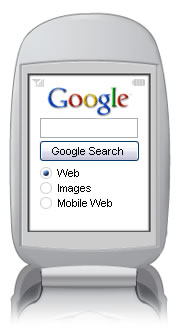 Browsing Gmail, Google’s email service, wasn’t particularly great when you did it from a mobile … until now. With the new release of gmail mobile that was launched today.
Browsing Gmail, Google’s email service, wasn’t particularly great when you did it from a mobile … until now. With the new release of gmail mobile that was launched today. Microsoft have finally woken up to the fact that people aren’t using their Web server product, Internet Information Server.
Microsoft have finally woken up to the fact that people aren’t using their Web server product, Internet Information Server. Microsoft will be excited with the comments of Andi Gutmans, co-founder and chief technology officer at Zend, “Since our preliminary work with Microsoft, we have already seen a better than 100 percent performance gain with some PHP applications on Windows Server 2003.” Good start.
Microsoft will be excited with the comments of Andi Gutmans, co-founder and chief technology officer at Zend, “Since our preliminary work with Microsoft, we have already seen a better than 100 percent performance gain with some PHP applications on Windows Server 2003.” Good start.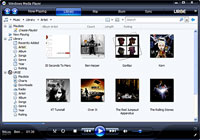 Confidently billed as “a milestone for music fans and the digital entertainment experience on Windows XP,” Microsoft’s shiny new Windows Media Player 11 claims support for more than 200 portable and home networking devices and hundreds of online music and video services and radio stations.
Confidently billed as “a milestone for music fans and the digital entertainment experience on Windows XP,” Microsoft’s shiny new Windows Media Player 11 claims support for more than 200 portable and home networking devices and hundreds of online music and video services and radio stations.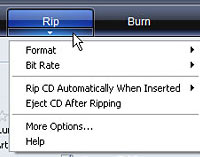 “The fresh, exciting new look, the ability to find songs and videos in an instant, and the enhanced capabilities for syncing with portable devices are not only exactly what customers have asked us for, they’re also a preview of what’s to come in Windows Vista,” he added.
“The fresh, exciting new look, the ability to find songs and videos in an instant, and the enhanced capabilities for syncing with portable devices are not only exactly what customers have asked us for, they’re also a preview of what’s to come in Windows Vista,” he added.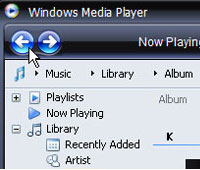 Tabs galore
Tabs galore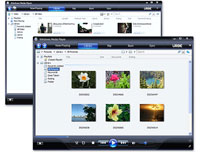 WMP11 can rip audio CDs in the default WMA format or the more popular MP3 format and there’s also support for the beardy audiophiles preferred format, lossless WAV, along with the ability to easily burn all supported file formats onto CD.
WMP11 can rip audio CDs in the default WMA format or the more popular MP3 format and there’s also support for the beardy audiophiles preferred format, lossless WAV, along with the ability to easily burn all supported file formats onto CD.